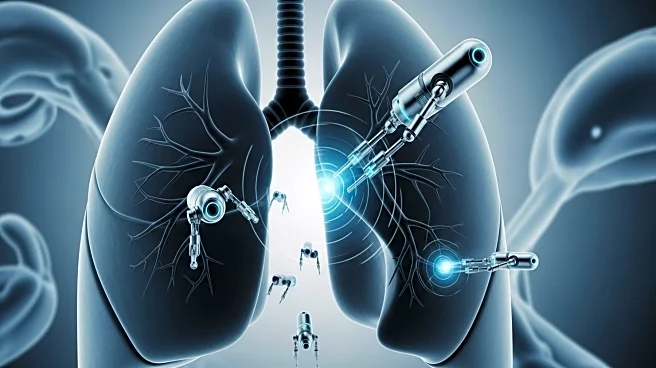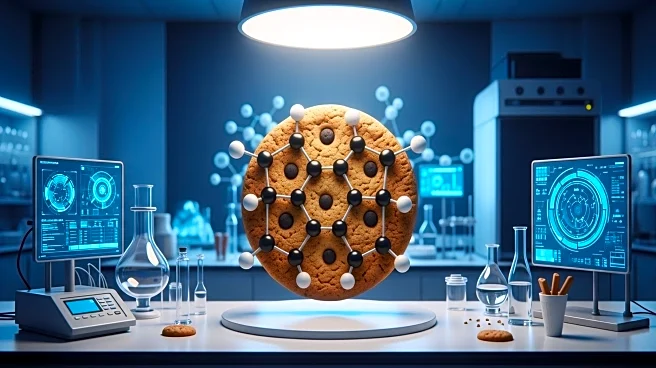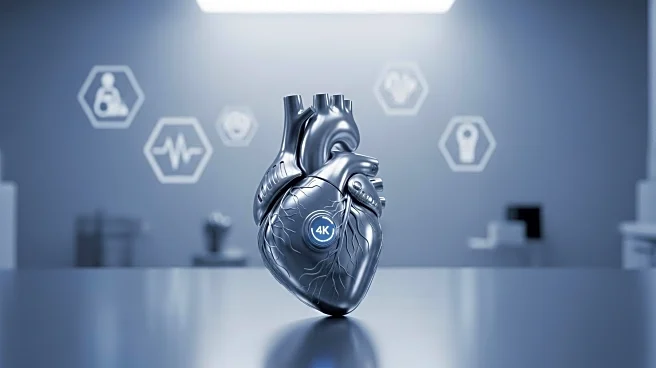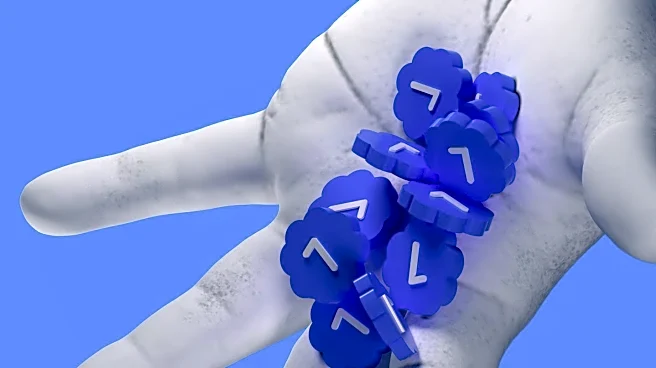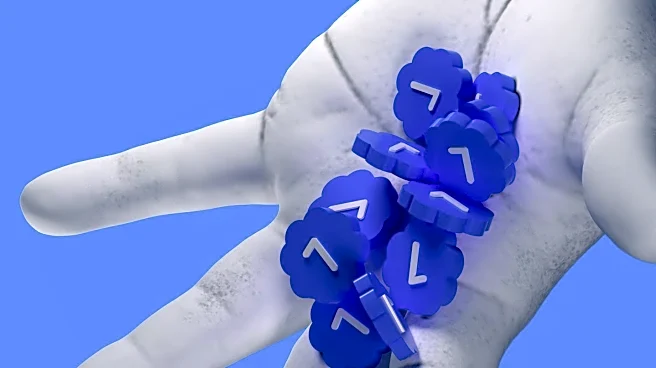What's Happening?
Researchers have developed biomimetic microrobots based on superparamagnetic bacteria, designed to deliver anti-inflammatory drugs to lung lesions. These microrobots, equipped with drug-loaded nanoparticles and a hybrid cell membrane, utilize magnetotactic bacteria for directional navigation and mucus penetration. In tests on pseudovirus-infected mice, the microrobots demonstrated prolonged lung retention and increased drug accumulation, significantly reducing inflammatory factors and enhancing virus inhibition compared to non-magnetic microrobots.
Why It's Important?
This innovation represents a significant advancement in targeted drug delivery, particularly for respiratory conditions. By improving drug delivery efficiency and reducing immune clearance, these microrobots could enhance treatment outcomes for patients with lung diseases. The technology offers a promising alternative to passive nanoparticles, potentially transforming therapeutic approaches in respiratory medicine.
What's Next?
Further research and development are needed to optimize the microrobots for clinical use, including human trials to assess safety and efficacy. The technology could pave the way for new treatments for various lung conditions, offering a more precise and effective method of drug delivery.
Beyond the Headlines
The development of biomimetic microrobots highlights the intersection of biology and engineering, showcasing the potential of bio-inspired technologies in medicine. It raises ethical considerations about the use of advanced technologies in healthcare and the need for regulatory frameworks to ensure safe implementation.

